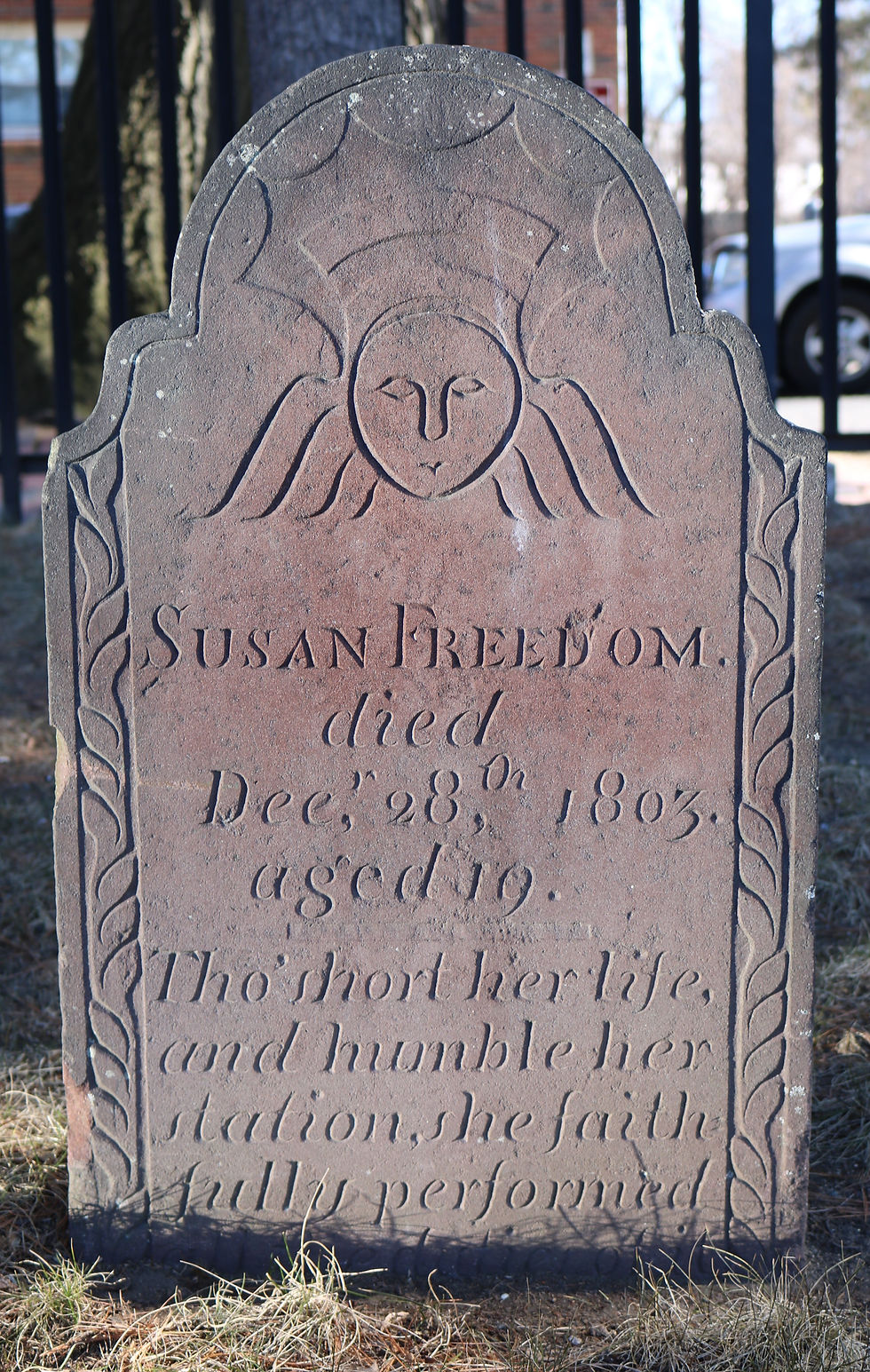- Beth Hoff

- Nov 11, 2022
- 4 min read
Updated: Dec 1, 2022

Indenture of Peter Pease to Noah Ashley
“…if he should be living…”
Sometimes, research leads you to more questions than answers, and this has been the situation with recent research on Peter Pease.
Among the documents in the archives of the Longmeadow Historical Society is the indenture dated May 6, 1805 for “…a poor child named Peter Pease son of Sally Kibbe of said Longmeadow a miner under the age of three years as a servant to Noah Ashley of said Longmeadow...to dwell with and serve the said Noah Ashley from the day of the date hereof until the day when the said Peter if he should be living will be twenty one years of age…” The indenture does not name a father, but it is clear from documents in our archives that Sally Kibbe identified Peter Pease.
Peter Pease was a married man. In 1794, Peter Pease married Anne Bliss of Longmeadow and the couple had two daughters, Sally Pease and Polly Pease, within the next few years. The 1800 census shows that Anne and two daughters were living in the Peter Pease household.
In early 1802, Sally Kibbe found herself to be “in the family way.” We do not know much about Sally, but she was possibly the daughter of Gideon Kibbe or Samuel Kibbe, both of whose households included young women in the 1800 U.S. Census. A Sally Kibbe was assigned a pew at First Church in 1796 and perhaps this was our Sally Kibbe. What we do know is that by September, 1802, Sally Kibbe was in unenviable situation – heavily pregnant, unmarried, and destitute enough to be considered a town pauper.
As a town pauper, the Town of Longmeadow financially supported her through her travails. Selectman’s Orders in the Longmeadow Historical Society archives show that the town reimbursed many members of the community who actively cared for Sally and her unborn child. Truly, it took a village to do so.
The town housed and fed her: “To Capt. Ethan Ely for the keeping & nursing Sally Kibbe from August 20 1802 to the 3 day of December 1802 its being services done by Zadock Stebbins”

The town tried to secure paternal acknowledgement and financial support for her baby by obtaining the name of the father, tracking him down, and serving him with a warrant:
“Also to Wm. Ely Esq. of Springfield for his service September 16th 1802 to coming to Longmeadow & taking examination of Sarah Kibbe”

Selectman’s Order August 25, 1806
“To Deac. William Colton for his time and expenses in securing Peter Pease/ also for his paying Eliphalet Terry Esq for writ/ also for his paying Capt. Williams for his service"

Selectman’s Order April 2, 1803
“To Col. Gideon Burt for his making a warrant for Peter Pease in 1802…

Selectman’s Order April 6, 1804
The town provided obstetric care for Sally during what appears to have been a long and difficult delivery: “To Doct. Joshua Frost attending Sally Kibby 1802 Sept. 28th to 9 hours attendance the 30th to opperatic obstetrics”

Selectman’s Order April 2, 1803
The town housed and fed Sally and her child after the birth: “To John Comes for his keeping Sally Kibbe child from Nov. 9th 1803 to 28th of March 1804 being twenty weeks…” / “Also To John Comes for his taking care Sally Kibbe last fall in her sickness three weeks…” / “Also to John Comes for Trouble in Weaning & Taking Care of Sarah Kibbe’s child.”

Selectman’s Order April 6, 1804
Finally, the town arranged for a permanent home for Peter Pease. On December 18, 1804, the Selectmen paid Noah Ashley $46 to assume care of Peter Pease until he turned 21 years of age. The indenture is dated May 5, 1805.

Selectman’s Order December 18, 1804
And, then the definitive records for Peter Pease cease. We do not know what happened to Peter; the best that we can do is conjecture.
Noah Ashley and his family went through difficult times after they accepted Peter into their home. Noah’s wife, Naomi Field Ashley, died suddenly in 1807 after falling from a wagon. Noah married Sarah Douglas in 1810 and it appears that he and his family left Longmeadow shortly afterwards, perhaps taking young Peter with them.
Perhaps Peter never had the opportunity to grow up but, instead, succumbed to a childhood disease like so many children in the 1800’s. We do not have a record of such a death, but his death might not have been recorded.
I like to think that infant Peter Pease became the Peter Pease who died March 30, 1872 and is buried in West Street Cemetery in Granby, Mass. That Peter Pease married, had children, and farmed for a living. His death documentation says that he was born in Longmeadow around 1803 and it lists John Pease and Nancy Combs as his parents. But this genealogical information is not reflected in Longmeadow's vital records.
Longmeadow has no record of John Pease or Nancy Combs ever living in our town, and the only Peter Pease born in Longmeadow in the 1800s was the infant born to Sally Kibbe. While I cannot definitively connect the two Peters, it is possible that John and Nancy took young Peter from the unsettled Ashley home and raised him as their son. It is unlikely that we will ever know the answer.
Sources
Longmeadow Historical Society Archives Marriage-Church Records 1716-1844 Massachusetts, U.S., Town and Vital Records, 1620-1988 1800 U.S. Census
Contributed by Elizabeth Hoff, LHS Board Member
August 5, 2021














